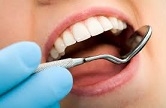NEW HYPNOSIS ON THE DENTIST’S CHAIR
by GianCarlo Di Bartolomeo
I used Ericksonian hypnosis in my practice for 20 years. I often received patients who were labelled by colleagues as “impossible to treat”: vomiting, terror or phobias, apparently unmanageable anxiety, clenched jaws; these were the most frequent symptoms.
As a studious of human kind, and as a health professional, many years ago I started to reflect upon how to use my patients’ resources in the best possible way, to search and research ways in which such resources could be used in therapeutical practice and, finally, to understand which were the most effective ways to retrieve them.
Even if hypnosis is one of the most ancient therapeutical techniques in history of humanity, its scientific acknowledgement is quite recent: Jean Martin Charcot, Neurophysiologist at the Salpetrière clinic where Sigmund Freud was a scholar, “obtained the recognition of hypnotic therapy by the Académie des Sciences, which in the previous 100 years had denied to animal magnetism any scientific dignity”1.
“This was because hypnosis has always been considered as a matter close to magic, occultism, superstition. Hypnosis instead is a matter of mental processes, and why shouldn’t science be interested to such mechanisms? Brain cells actually control the body in many ways – from the neurologic, physiologic and psychological point of view. Hypnosis truly became an official medical discipline in the second decade of this last century, when people started to take an interest to the concept of psychosomatic medicine”2.
In this new scientific frame, it is important to distinguish Traditional Hypnosis from Ericksonian Hypnosis.
Traditional Hypnosis is characterized by a directive and authoritarian approach. Patients are passively subjected to the hypnotist’s directives, evident ideomotor responses are elicited as a proof that therapy is going well.
In Ericksonian hypnosis interventions are apparently minimal, the attention of the therapist is oriented to notice micro-signals that indicate the actual state of patients and its possible evolutions.
Milton H. Erickson, founder of the New Hypnosis, or Modern Hypnosis, realized, through a long personal work, that by relating with the inner word of “others”, healing happened more rapidly and effectively.
Some colleagues may ask themselves what the advantages of knowing this technique are in dental settings. Learning Ericksonian hypnosis is very useful first of all to manage in the best possible way our resources as therapists exposed day by day to our patients’ tensions and discomforts (along with, as any other one, to everyday life).
I intend to provide a short list of the fields in which the technique can be used in our daily practice
Bibliography
1. Camillo Loriedo, Dal “sonno magico” alla Nuova Ipnosi, in IPNOSI E TERAPIE
IPNOTICHE, Ponte alle Grazie, Milano, 2006
2. Milton H. Erickson, GUARIRE CON L’IPNOSI, vol. I, Casa Editrice Astrolabio,
Roma, 1984
As a studious of human kind, and as a health professional, many years ago I started to reflect upon how to use my patients’ resources in the best possible way, to search and research ways in which such resources could be used in therapeutical practice and, finally, to understand which were the most effective ways to retrieve them.
Even if hypnosis is one of the most ancient therapeutical techniques in history of humanity, its scientific acknowledgement is quite recent: Jean Martin Charcot, Neurophysiologist at the Salpetrière clinic where Sigmund Freud was a scholar, “obtained the recognition of hypnotic therapy by the Académie des Sciences, which in the previous 100 years had denied to animal magnetism any scientific dignity”1.
“This was because hypnosis has always been considered as a matter close to magic, occultism, superstition. Hypnosis instead is a matter of mental processes, and why shouldn’t science be interested to such mechanisms? Brain cells actually control the body in many ways – from the neurologic, physiologic and psychological point of view. Hypnosis truly became an official medical discipline in the second decade of this last century, when people started to take an interest to the concept of psychosomatic medicine”2.
In this new scientific frame, it is important to distinguish Traditional Hypnosis from Ericksonian Hypnosis.
Traditional Hypnosis is characterized by a directive and authoritarian approach. Patients are passively subjected to the hypnotist’s directives, evident ideomotor responses are elicited as a proof that therapy is going well.
In Ericksonian hypnosis interventions are apparently minimal, the attention of the therapist is oriented to notice micro-signals that indicate the actual state of patients and its possible evolutions.
Milton H. Erickson, founder of the New Hypnosis, or Modern Hypnosis, realized, through a long personal work, that by relating with the inner word of “others”, healing happened more rapidly and effectively.
Some colleagues may ask themselves what the advantages of knowing this technique are in dental settings. Learning Ericksonian hypnosis is very useful first of all to manage in the best possible way our resources as therapists exposed day by day to our patients’ tensions and discomforts (along with, as any other one, to everyday life).
I intend to provide a short list of the fields in which the technique can be used in our daily practice
Bibliography
1. Camillo Loriedo, Dal “sonno magico” alla Nuova Ipnosi, in IPNOSI E TERAPIE
IPNOTICHE, Ponte alle Grazie, Milano, 2006
2. Milton H. Erickson, GUARIRE CON L’IPNOSI, vol. I, Casa Editrice Astrolabio,
Roma, 1984

